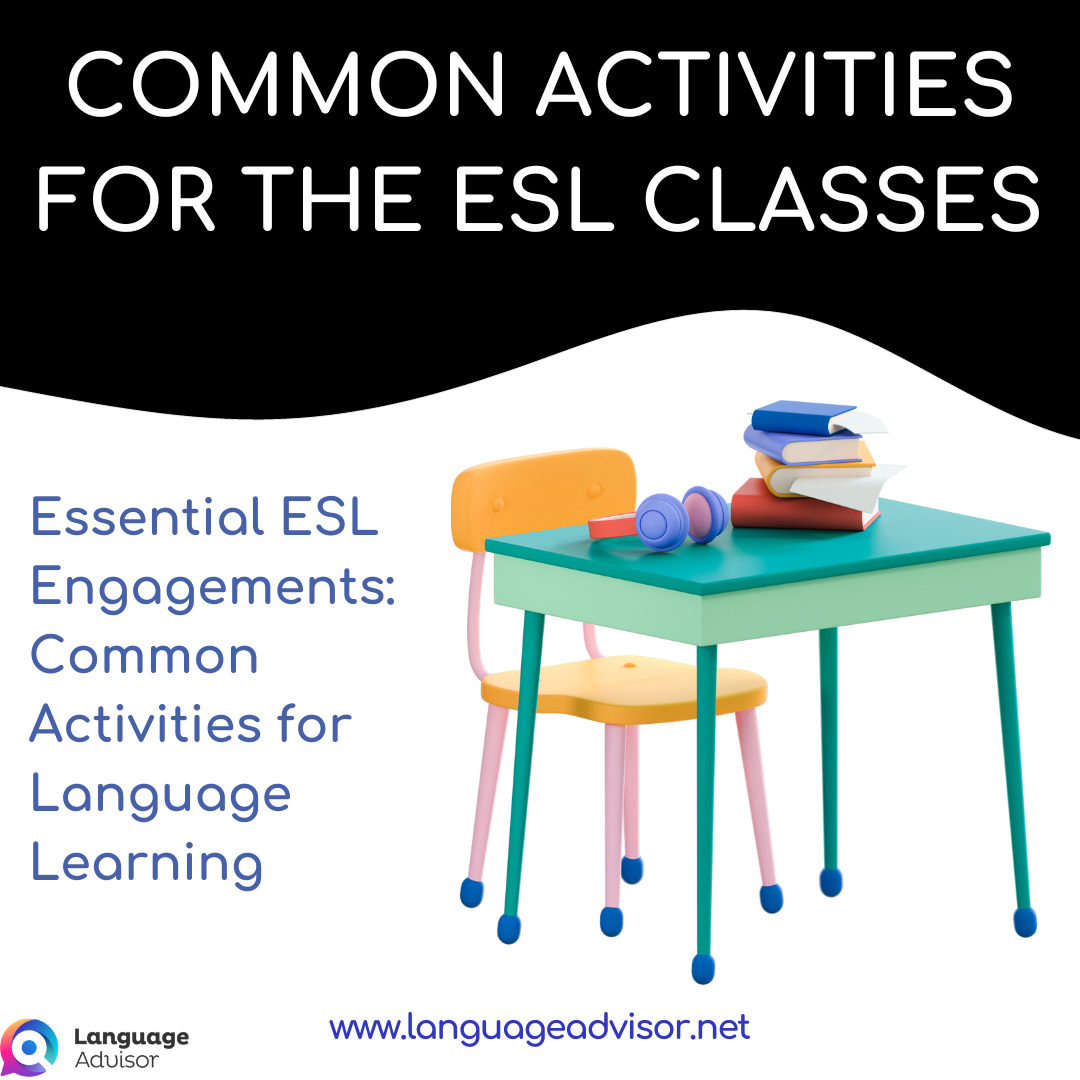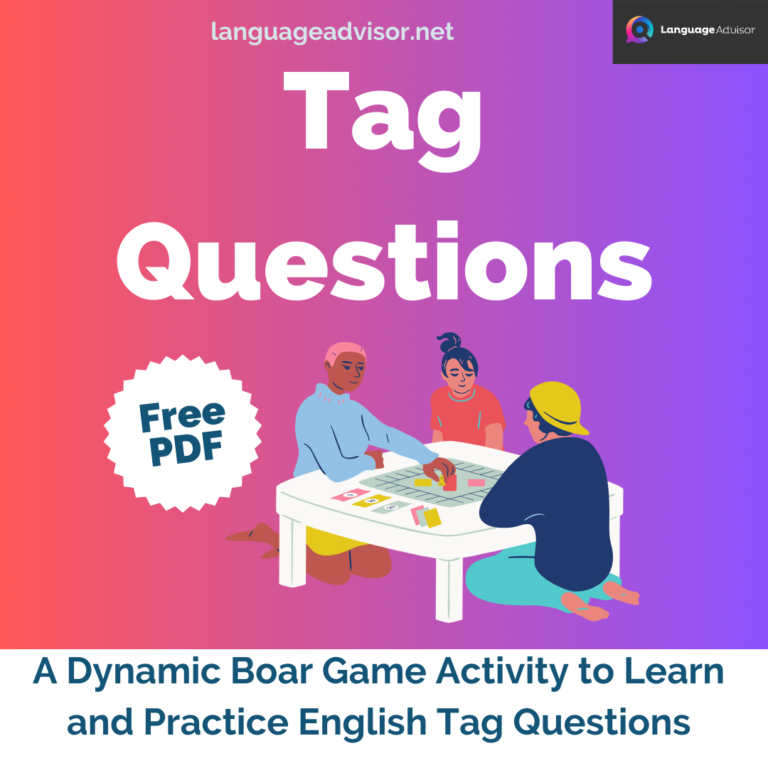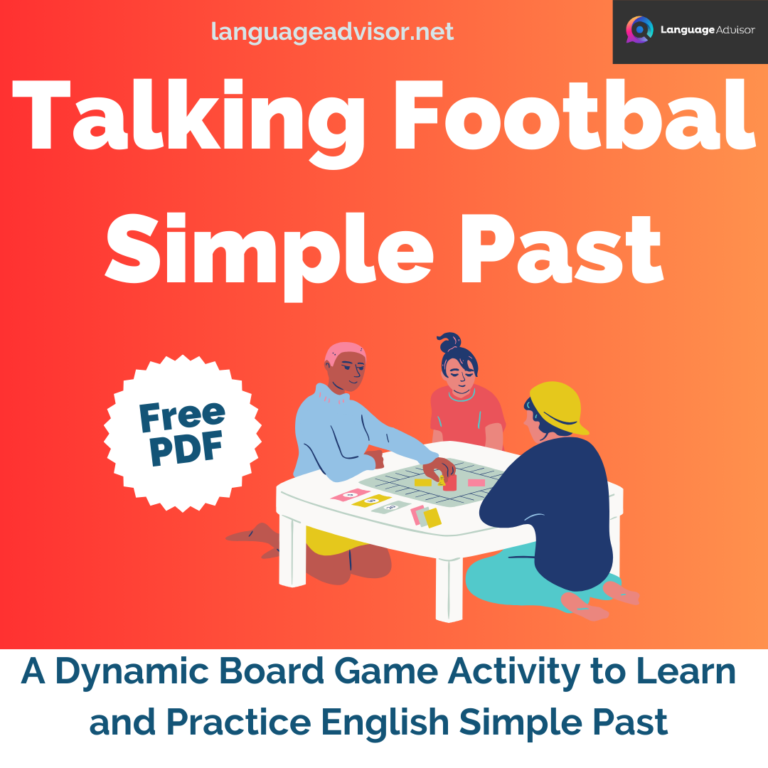Common Activities for the ESL Classes. Essential ESL Engagements: Common Activities for Language Learning
Common Activities for the ESL Classes

Common Activities for the ESL Classes
The key to success in teaching is building meaningful connections with students. Reflect on your own school experience—did you thrive in classes that lacked excitement or relevance? Avoid falling into that same trap; instead, be captivating, energetic, and true to yourself. A golden rule to follow is to “provoke a reaction, grab their attention, focus their energy.”
Creating an effective language-learning environment hinges on fostering a comfort zone where students feel at ease making mistakes, experimenting, and learning from failures. Simply providing them with this space can make a significant impact.
The upcoming sections feature language activities designed to cultivate an environment where students can participate without the overwhelming fear of making mistakes. These activities vary in skills and objectives, roughly organized by suitability levels—from junior high school to senior high school, kindergarten, elementary, and adult classes. The categories include spelling and vocabulary activities, listening activities, communication (including information gap) activities, writing activities, and miscellaneous activities. It’s worth noting that many of these activities are adaptable to other target levels, allowing for versatility across different educational stages. Whether you’re working with elementary school or adult classes, feel free to use and modify these activities to suit your students’ levels. Embrace your creativity, have fun, and best of luck!

Common Activities for the ESL Classes: Using the Activities
English is a dynamic language, and while this may seem apparent, it’s easy for ESL students to lose sight of it. Communicative activities should strive to instill in students a genuine need to communicate, demonstrating that a foreign language is a tool for exchanging ideas and information among themselves, not solely reserved for foreigners. Given their tendency to focus on passive activities like translation and grammatical analysis, students often lack practice in producing new language. Thus, the emphasis should shift towards active participation, listening for meaning rather than just sound, and responding verbally to situations instead of following drills.
Speaking activities serve as a vital means to achieving the ultimate goal of free conversation. Some activities suggested in the following sections work well as warm-ups, while others lend themselves to more extended exercises. Feel free to adapt these activity suggestions to align with the needs and preferences of your students.

Common Activities for the ESL Classes: Small Group Activities
Working in pairs or small groups of two, three, or four, students can utilize their language skills to effectively communicate while completing assigned tasks or solving problems. Pair-work is relatively easy to organize and ensures active participation from all students. In slightly larger groups, some students might prefer to take a back seat and let others in their group take the lead.
One notable advantage of this activity is that the class size becomes less critical. In larger classes, all students get the chance to speak during the same lesson. This approach prevents anyone from feeling singled out or pressured to speak in front of their classmates.

Common Activities for the ESL Classes: Preparing the Class
Establishing the routine of small-group activities may take a few weeks, but students should adapt fairly quickly. During pair-work, both you and the JTE should circulate around the room to ensure that students are practicing correctly.
It’s crucial to pre-teach the language necessary for the activity itself. To avoid spending a significant portion of the lesson on vocabulary instruction and comprehension checks, position pair-work as a complementary activity—a means of revising and reviewing previous lessons. Ensure that students comprehend your instructions and commands, and strive for consistency. Teach phrases like:
- “Work in pairs/twos/threes.”
- “Work with the person sitting next to you/behind you/in front of you.”
- “Get/split into pairs (now) please.”
- “If you want any help, raise your hand.”
- “Look.” “Listen.” “Be quiet.”
Team-demonstration of activities is usually quite effective. As students can visually observe the procedure, less spoken instruction is needed.

Grouping
One of the simplest ways to group students is by assigning letters or numbers around the class, such as “A, B, A, B…” (or A, B, C, A, B, C…). Ensure that students are familiar with their designated letter or number by asking all As to raise their hands and then all Bs. Clarify your instructions by identifying yourself as “A” and the teacher as “B,” illustrating the activity in front of the whole class.
Since students often sit near their friends, if you want to vary the grouping and change classroom dynamics, it can be helpful to be entirely arbitrary. For instance, ask students to quickly line up from tallest to shortest and letter off. Another option is to arrange them according to birthdate, January 1 to December 31, and letter off backward. If you have both boys and girls together, ensure that the assignment is appropriate and won’t cause embarrassment for either party, as this could become a barrier to language learning.

Cheating
One challenge with small-group activities is the potential for some students to attempt cheating by using their native language or disclosing “forbidden” information. To address this, actively move around the room so that students are aware they may be observed. It’s important for them to realize that although such activities are more relaxed and enjoyable than traditional lessons, they are not merely games.
To prevent cheating, consider using physical barriers, such as placing bags on desks that act as a barrier over which pairs must communicate information hidden from each other. Another approach is to have students sit back to back and speak over their shoulders to each other. Alternatively, tailor your incentives to your group. Introduce a competitive element, such as awarding points for correct solutions or rapid completion of the assigned task.

Also check out these articles on teaching, teaching methods and teaching tools












